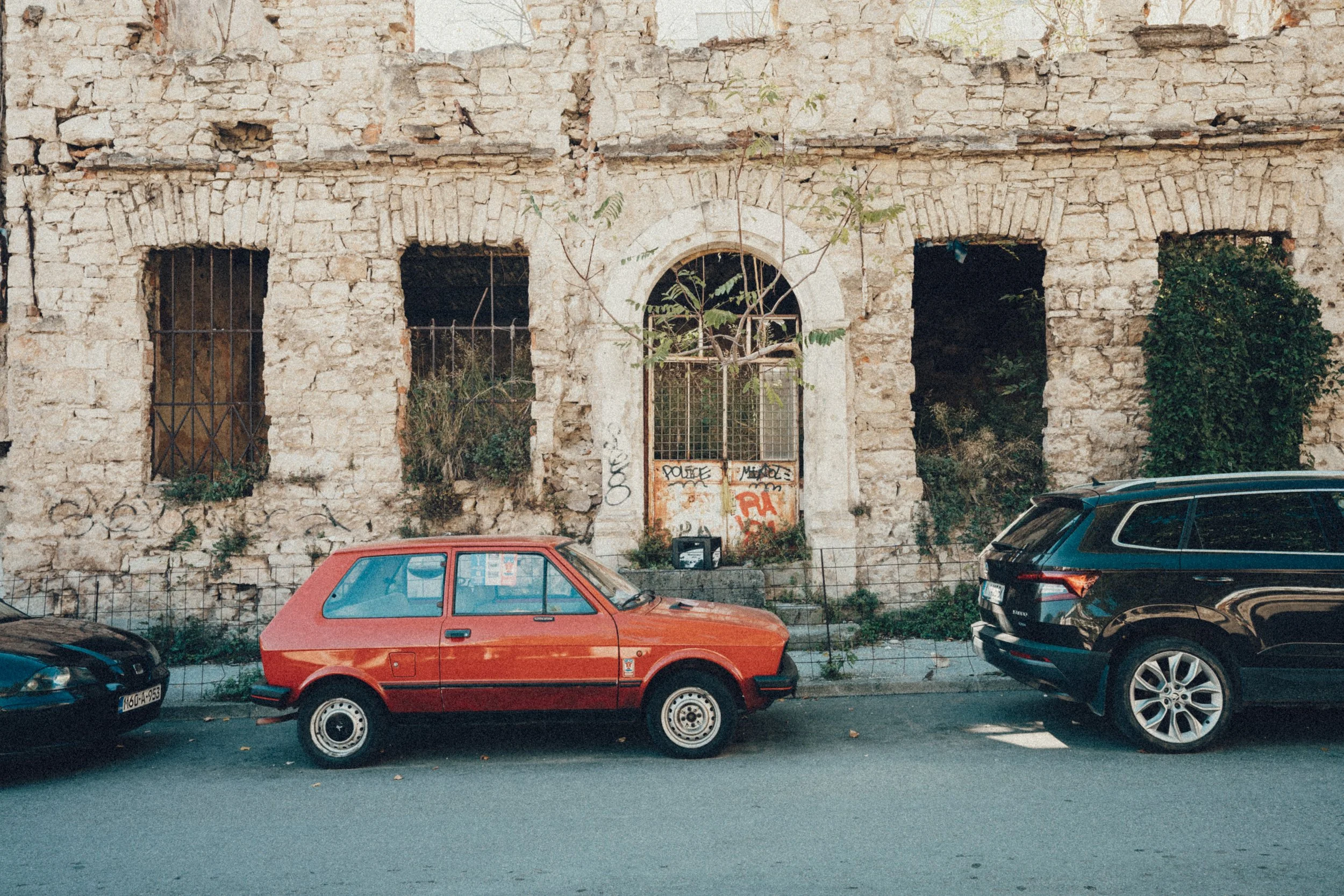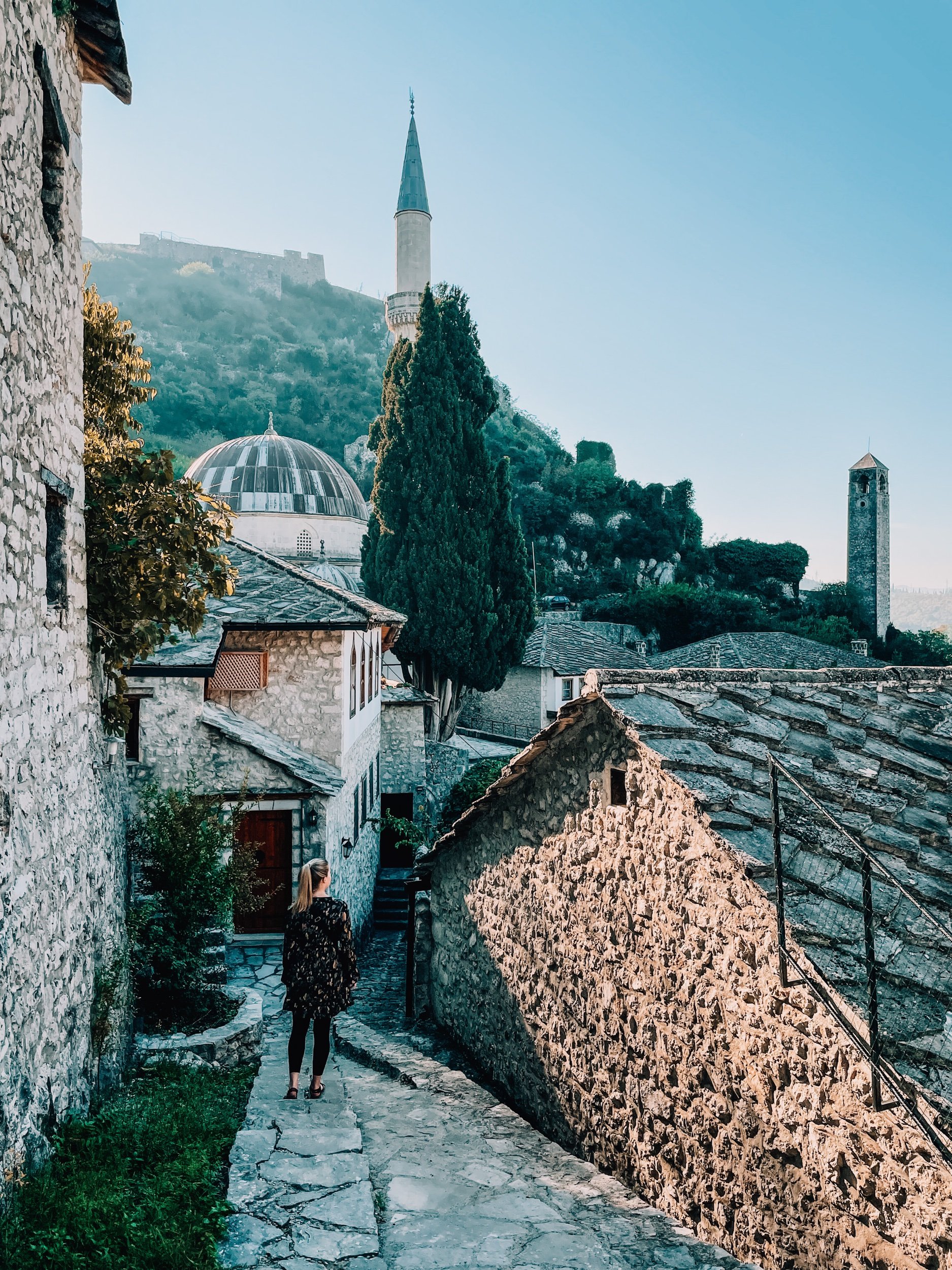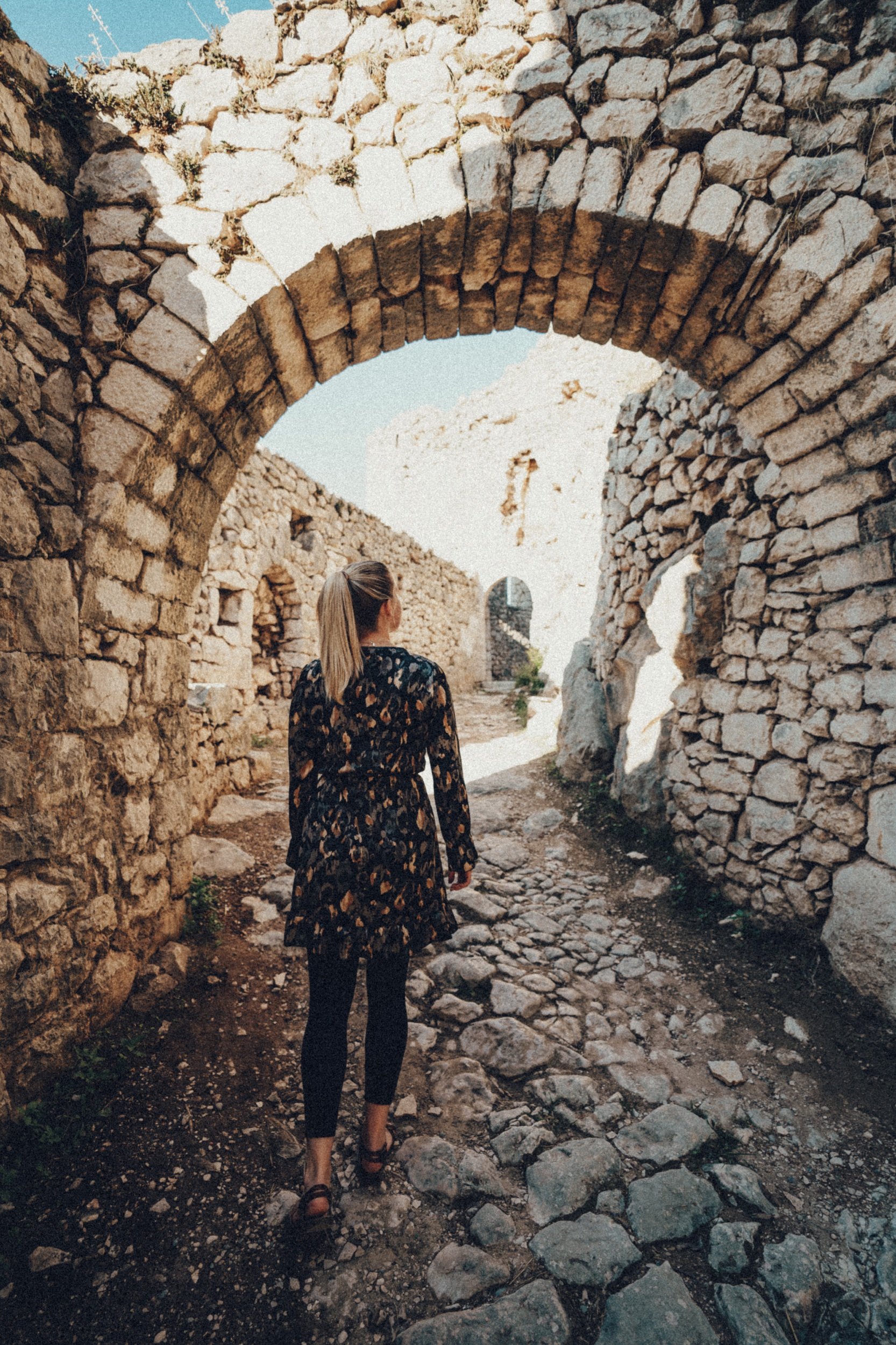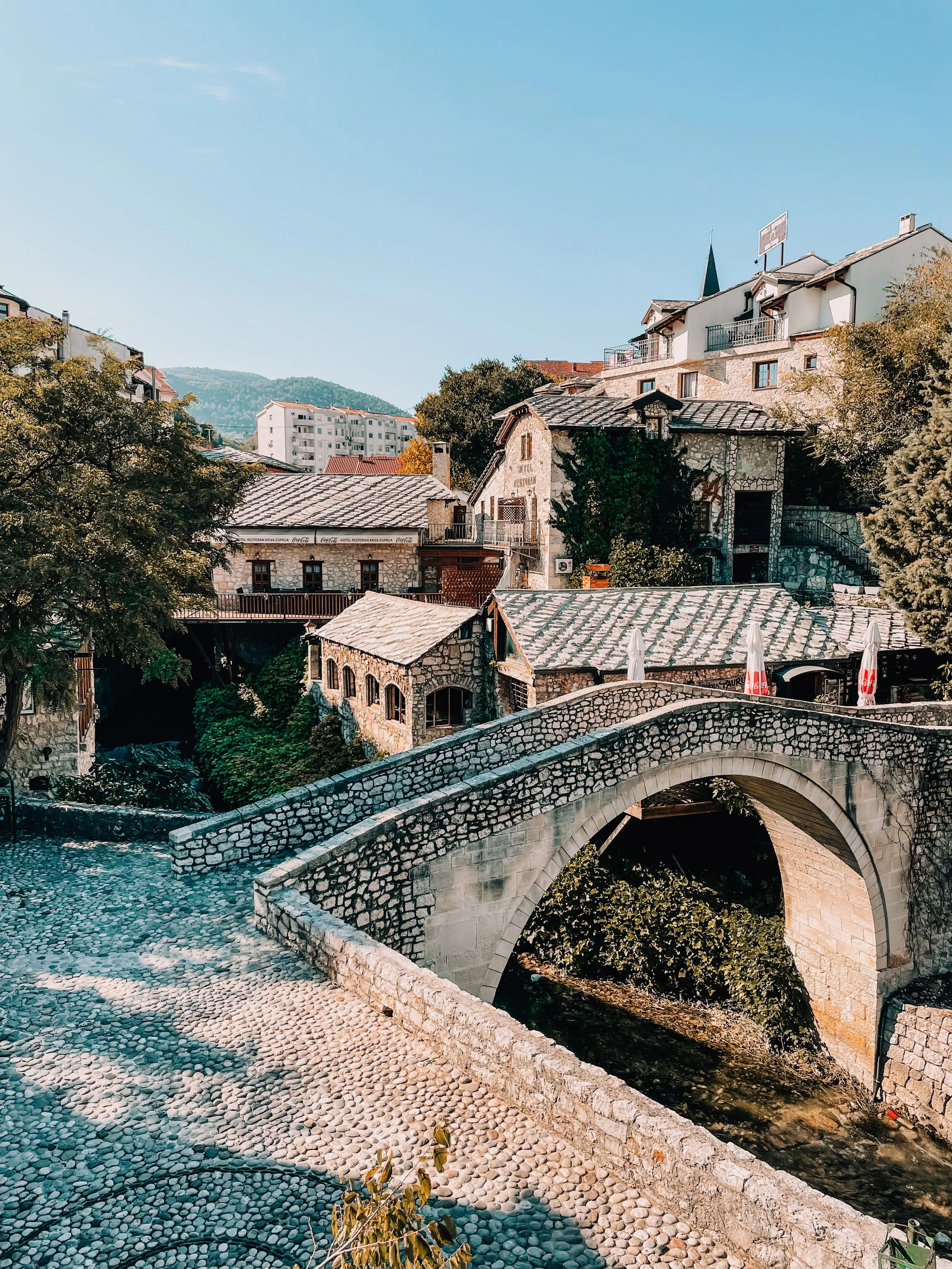A Day in Bosnia
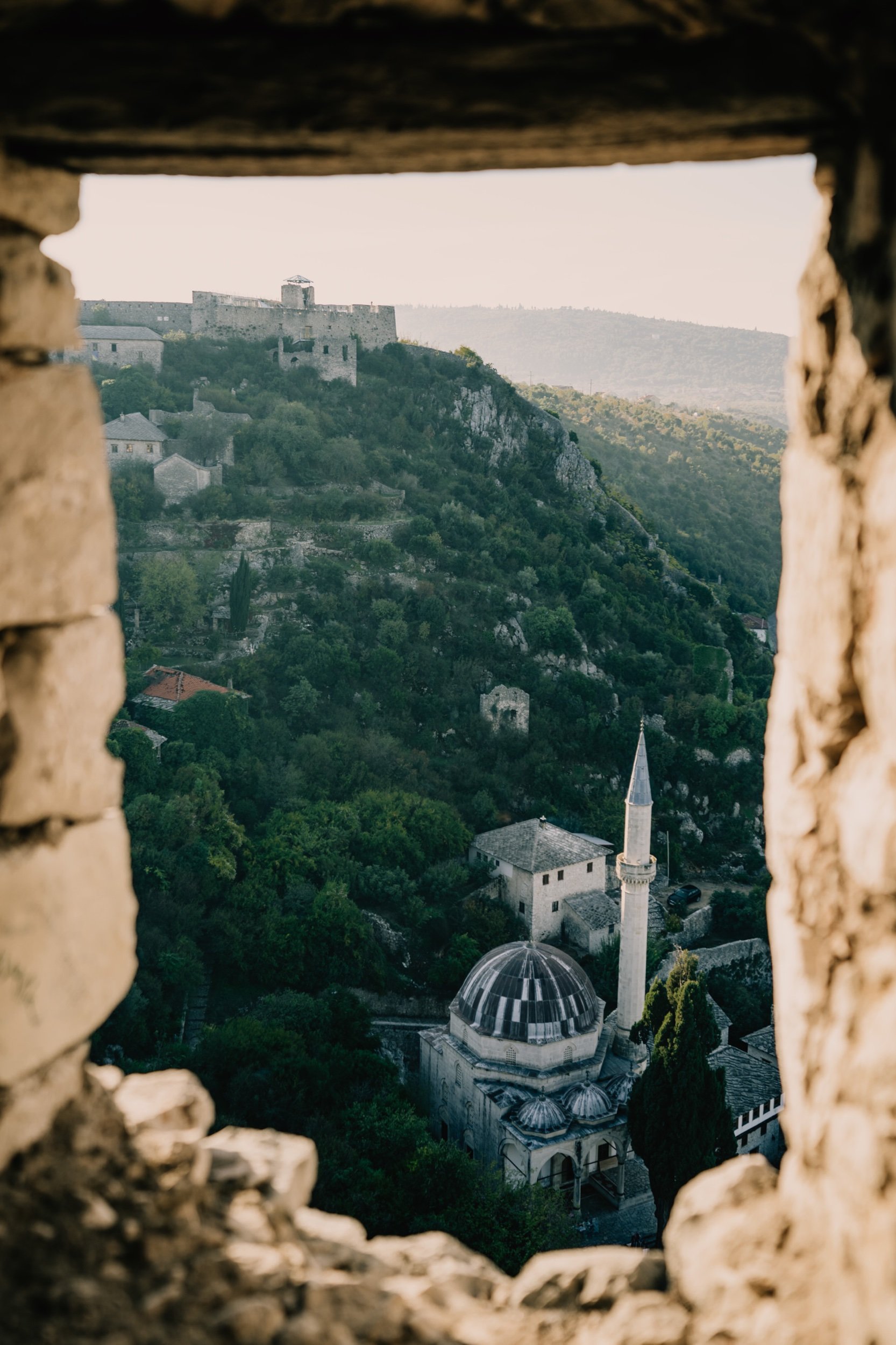
Bosnia and Herzegovina is one country with two names, three nationalities, three presidents, and one very recent wound in its history.
It’s one of the more complex parts of the world that I’m still grappling to understand. As the Croatian border disappeared from view behind us, it didn’t take long for the difference to become apparent. The fresh asphalt turned into aged and narrow highways strung across the hills between towns. Older cars lined dusty streets, and if you looked closely enough, you could still spot rubble from the war in the early nineties. There’s an effort to clean up the cities, but the progress is slow. Still, people walk the streets and go about their lives.
Not too long after crossing the border, we stopped at a little village beneath the ruins of an old fortress. A couple of locals set up stands with fruit and textiles in the quiet cobbled streets. Stairs led the way through the old stone houses, past the local mosque, to the hilltop where the fortifications of a much older city remain. There was a slight chill in the early autumn air, and the light shone warmly on the face of the minaret and the old tower. We made our way through crumbling arches to the foot of the tower where a narrow, steep passage wound its way up into darkness. Cautiously, we found our footing on the worn stones and caught glimpses of light from the floors above. The tallest level commanded views high above the mosque and quaint town. The morning light spilled across sparsely green mountain tops and cascaded through the valleys below. You could trace the old road through winding hills, and long past the ruins, cranes rose out of the valley floor piecing together what would one day be a motorway linking the country more directly with the rest of the region. Progress runs slowly here.
The region has long been at the crossroads of East and West. Not far from the fissure that split the Roman Empire, the area has been swept with the tides that have strived to fill the power vacuum ever since—from the Ottomans to the Austro-Hungarians. The identities of the people who call the Balkans home predate most of the lines that have been drawn on the maps over the years. Because of that, each country contains multiple ethnic groups: Croats, Bosniaks, and Serbs. Modernday Bosnia and Herzegovina is the mostly ethnically diverse of the Balkan states.
As we made our way toward Mostar, our guide told us stories of the recent history. Bosnia & Herzegovina, along with five other Balkan states, were part of the former Yugoslavia. Under the communist government, people were guaranteed education and free housing, which some of the older generation romanticizes, but the good stops there. The Yugoslav national identity was closely tied with its leader, Josip Broz Tito, and his death in 1980 along with rampant inflation contributed to the breakup of Yugoslavia. Slovenia was able to exit peacefully for the most part, but Croatia and Serbia disagreed on the terms of the secession. This led to conflict between the two nations as well as the two ethnic groups. Originally, Croatians and Bosnians fought alongside each other against a common enemy, the Serbs. But as the tides of the war shifted, they fought against each other, leading to some of the bloodiest days of the war. You’ll hear different stories of what happened depending on who you talk to, but the one thing everyone has in common is that no one escaped the impact.
Mostar sits in a valley beneath slabs of earth that tilt upward. The old bridge, or Stari Most, spans the width of the Neretva River; spring fed, it’s one of the coldest rivers in the world. At 24 meters high, people come from all over the world to jump from the arch into the swift, icy waters below. The bridge connects the two sides of town: the predominantly Croat west and the predominantly Bosniak east. It was built in the 16th century by the Ottomans to facilitate trade and was a marvel of its time—where it stood until it was bombed in 1993. A modern replica now stands in its place. The streets leading up to it are narrow and cobbled with smooth stones from the river. The shops on either side form an outdoor bazaar, and restaurant owners and merchants solicit business from tourists in the streets. To me, this was a little intrusive, but we learned to evade it or politely ignore it.
One thing Bosnians are particularly proud of is their coffee. Both sides of the market were lined with hand-engraved copper sets adorned with ornate patterns or scenes from the region. The coffee is brewed black and served unfiltered in ornate kettles and poured into handless cups not much bigger than an espresso cup. The locals dip sugar cubes into it and eat them like Oreos though no one will fault you if you just mix it in—as long as you don’t call the coffee Turkish.
We made our way out of the silk scarf-ladden streets down a slick staircase to the banks of the river. The water, high, rushed over jagged rocks beneath the arch. People snapped photos as ducks bravely tried to navigate the swift current—some giving up and flying instead. Along the banks were scattered large stone blocks—the only remains of the original structure. They sit as a reminder that the bridge has fallen once. Even though it was rebuilt, it wasn’t time that eroded its strength; it was division. Still, the new bridge points toward a new era. It spans the same gap, but it was crafted by a new generation. One tasked with cultivating a national identity that, perhaps for the first time, can be free to grow on its own.
A few things stuck with me after the visit. One is the inequality. Government corruption keeps everyday Bosnians at a disadvantage. The average salary is less than $800 USD/month, and it’s a place where working hard isn’t always enough to rise out of difficult circumstances. Two, as an outsider, I struggled to understand a prejudice I couldn’t discern. In America, our flavor of prejudice tends to be racism which is highly visible. Here, the ethnic lines are drawn on religion dating back to a point that, perhaps through my own ignorance of this part of the world, I don’t fully understand. It’s something I want to explore and understand more. Three, I suspect we Americans have a tendency to oversimplify and generalize peoples and places. We like things tidy and orderly and easy to understand. But it doing so, we have the potential to miss out on the complexity, and sometimes the humanity, of the world around us. In a land that exists in between shades of black and white, you’ll find more color than anything else—if you’re willing to look.
